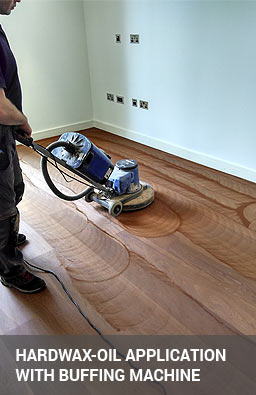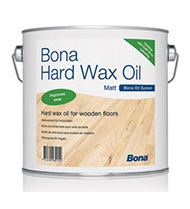Back to Flooring Products
Oil vs. Hardwax-Oil Finishes: Benefits, Drawbacks & Recommendations
 In the world of wood floor finishes, oil and hardwax-oils have become increasingly popular alternatives to traditional lacquers. Many homeowners are curious about them: Are they durable? Easy to maintain? Better than lacquer or penetrating oils? The truth is, each finish comes with its own pros and cons. Understanding how oils, lacquers, and hardwax-oils compare will help you choose the best solution for your flooring needs.
In the world of wood floor finishes, oil and hardwax-oils have become increasingly popular alternatives to traditional lacquers. Many homeowners are curious about them: Are they durable? Easy to maintain? Better than lacquer or penetrating oils? The truth is, each finish comes with its own pros and cons. Understanding how oils, lacquers, and hardwax-oils compare will help you choose the best solution for your flooring needs.
Lacquers: The Strongest Protection
Lacquers remain the most resilient and widely used finish on the market. They form a tough protective film on top of the floor, offering excellent durability with minimal maintenance. However, lacquered floors can be prone to surface scratches, and the glossy film may sometimes look a bit too “plastic” or artificial compared to natural finishes.
Penetrating Oils: Natural Beauty with Trade-offs
Penetrating oils soak deep into the wood, enhancing the grain and giving floors a warm, organic appearance. They are less prone to surface scratching than lacquer, and spot repairs are simple. On the downside, oils can yellow over time, making them unsuitable for lighter stains, and they require more frequent maintenance since they don’t offer the same level of protection as lacquers.
Hardwax-Oils: A Hybrid Approach
Hardwax-oils were designed to combine the best of both worlds. Like penetrating oils, they soak into the wood, enriching its natural texture, while also forming a thin protective film similar to lacquer. This balance gives hardwax-oiled floors a natural, less glossy appearance that appeals to many homeowners.
That said, there are trade-offs. Compared to polyurethane lacquers, hardwax-oils are less durable, especially in high-traffic areas where the finish wears faster. They also offer weaker resistance to spills, meaning liquid marks can appear more easily. However, they share a big advantage with oils: they are easy to spot repair without needing to refinish the entire floor.
Pro Tip: If you want a balance between durability and a natural look, hardwax-oils can be a great choice for low-to-medium traffic areas. For kitchens, hallways, or busy households, lacquer may still be the safer bet.
Our Verdict
In our experience, lacquer outperforms hardwax-oils in durability, but hardwax-oils offer a more natural look and better repairability. Compared to modern penetrating oils, hardwax-oils often strike a better balance between protection and aesthetics. Ultimately, the right choice depends on your lifestyle, traffic levels, and design preferences.
Our Recommended Hardwax-Oil Products
Hardwax oils definitely have their place on the market. While they aren’t as tough as lacquers, the right brand makes a big difference in performance. From our experience, the Bona Carl’s range of oils and Osmo hardwax-oils stand out as some of the best on the market. These are the products we regularly use in our wood floor restoration projects, thanks to their reliability and superior finish.
Buy Osmo Hardwax Oils
Main Benefits of Osmo & Bona Hardwax-Oils
- Deep penetration into the wood to enhance natural beauty and elasticity.
- Excellent water-repelling properties, leaving no water-marks.
- Will not crack, flake, peel, or blister with time.
- Micro-porous sealing that allows the wood to breathe.
- Resistant to common stains from wine, coffee, tea, juices, milk, and water-based solutions.
- Free from biocides and preservatives—safe for children and pets.
- Easy cleaning with Osmo Wash & Care or Bona Carl’s Cleaner.
- Simple renovation—spot repair small areas without leaving marks, sometimes with just a single coat.
- Eco-friendly formula made from natural oils and waxes sourced from renewable resources.
Advantages of Waxed Floors vs. Varnished Surfaces
 Choosing a waxed finish offers both aesthetic and practical benefits that varnishes cannot provide:
Choosing a waxed finish offers both aesthetic and practical benefits that varnishes cannot provide:
- Waxed floors deliver a soft, natural surface sheen rather than a glossy, artificial look.
- They can be re-waxed multiple times to refresh the finish.
- Buffing allows you to control the exact level of sheen you prefer.
- Unlike varnished floors, waxed floors allow for “patch-work” repairs without the need to sand and refinish the entire floor.
Pro Tip: If you’re looking for a floor that combines natural beauty, easy maintenance, and eco-friendly ingredients, Osmo and Bona hardwax-oils are some of the best choices available today.
Conclusion
Oil and hardwax-oil finishes strike a unique balance between natural beauty and practical performance. While lacquers still win in durability, hardwax-oils like Osmo and Bona Carl’s offer an eco-friendly, repairable, and attractive alternative that allows wood floors to age gracefully. With the ability to spot-repair, maintain breathability, and enhance the natural look of timber, these products are excellent options for homeowners who value both aesthetics and sustainability. Choosing the right finish depends on your lifestyle, traffic levels, and design goals—but with professional guidance, you can enjoy a floor that stays both beautiful and functional for decades.
Frequently Asked Questions About Oil and Hardwax-Oil Finishes
Are hardwax-oils as durable as lacquer finishes?
No, lacquers generally offer stronger surface protection, especially in high-traffic areas. However, hardwax-oils are easier to repair and maintain locally, without needing to refinish the entire floor.
Do hardwax-oils make floors look natural?
Yes. Hardwax-oils enhance the grain and texture of the wood, giving it a warmer and more organic look compared to the sometimes glossy, artificial appearance of lacquers.
How often should I maintain a hardwax-oil floor?
It depends on traffic. Typically, a refreshing coat every 2–3 years will keep the finish protective and vibrant. Regular cleaning with pH-neutral products like Osmo Wash & Care or Bona Cleaner also extends performance.
Can I repair small areas of a hardwax-oil floor?
Yes. One of the biggest benefits of hardwax-oils is the ability to spot repair small sections without visible marks, unlike varnished floors that usually require full sanding and refinishing.
Are hardwax-oils eco-friendly?
Yes. Products like Osmo Polyx-Oil are made from natural oils and waxes sourced from renewable resources. They are also free from harmful preservatives, making them safe for children and pets.
Want professional advice on choosing the best finish for your floor? Explore our range of professional finishes or book a consultation with our wood floor restoration specialists today.